Fats Domino was more than just a musician; he was an embodiment of the jubilant spirit and uninhibited joy that defined early rock and roll. As the genre’s first piano virtuoso, his influence reverberated through generations of artists, from his contemporaries like Jerry Lee Lewis and Little Richard to New Orleans soul icons such as Dr. John and Allen Toussaint, and rock-era piano maestros like Billy Joel and Elton John. Dr. John aptly noted in a Rolling Stone tribute, accompanying Domino’s recognition as one of the 100 Greatest Artists of All Time, “That innocence is there in his music. He’s a good man, and people respond to that goodness.”
The sheer, easygoing freedom encapsulated in hits like “Whole Lotta Loving,” “I’m Walkin’,” and “Blueberry Hill,” the tender intimacy of “I Want to Walk You Home,” and the poignant heartache of “Ain’t That a Shame” continue to captivate listeners, resonating deeply even after six decades since their initial release. Although his chart-topping success waned in the 1960s, Fats Domino remains a vibrant and central figure, forever associated with the open-hearted and celebratory essence of American pop music. This article delves into some of the essential Fats Domino Songs that cemented his legacy.
“The Fat Man” (1950)
This dynamic track, clocking in at just over two minutes, burst onto the scene from New Orleans, a potent cocktail of Delta blues melody, boogie-woogie piano rhythms, raw sexual energy, and spontaneous jazz-infused vocal improvisations. Featuring Domino’s powerful piano playing and Earl Palmer’s unwavering backbeat, “The Fat Man” stands as a foundational rock and roll record. Langdon Winner, in The Rolling Stone Illustrated History of Rock & Roll, points out its roots in the barrelhouse standard “Junker’s Blues.” However, Domino infused it with an infectious energy and playfully suggestive lyrics, transforming a lament about drug addiction into a gleeful, libidinous boast, establishing Fats Domino as the original “Overweight Lover” with his debut 10-inch single.
“Goin’ Home” (1952)
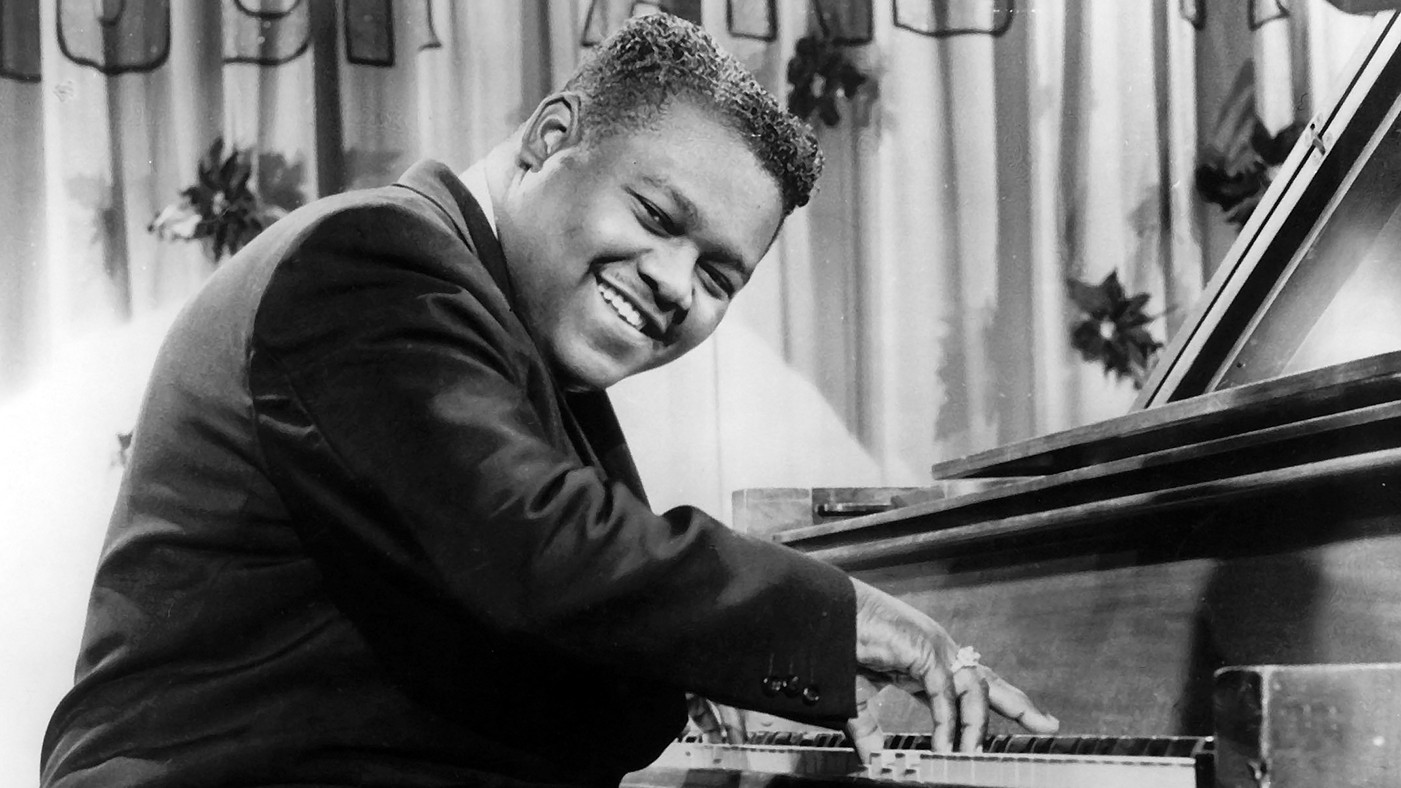 Fats Domino performing live, capturing the essence of his essential songs
Fats Domino performing live, capturing the essence of his essential songs
“Goin’ Home,” co-written with Alvin E. Young, marked Domino’s first Number One hit on the R&B charts. This melancholic tune is a poignant farewell to a troublesome lover. Domino’s vocals, singing “Goin’ home tomorrow/Can’t stand your evil ways,” are set against a compelling half-time blues groove. The track’s enduring appeal is evidenced by numerous covers from artists like Little Richard, Dr. John, and Percy Sledge, each adding their own interpretation to this classic break-up song, further cementing its place among essential Fats Domino songs.
“Ain’t That a Shame” (1955)
In the summer of 1955, “Ain’t That a Shame” propelled Fats Domino into mainstream pop success after a series of R&B hits. While Pat Boone’s sanitized cover version (initially considered to be titled “Isn’t That a Shame”) reached Number One, industry legend Jerry Wexler’s comment, “Fats Domino is still the thing. Who cares about what’s his name with the white buck shoes?” underscored the authentic appeal of Domino’s original. This song is a quintessential example of Domino’s ability to blend rhythm and blues with pop sensibilities, making it a cornerstone of his essential songs.
“Blueberry Hill” (1956)
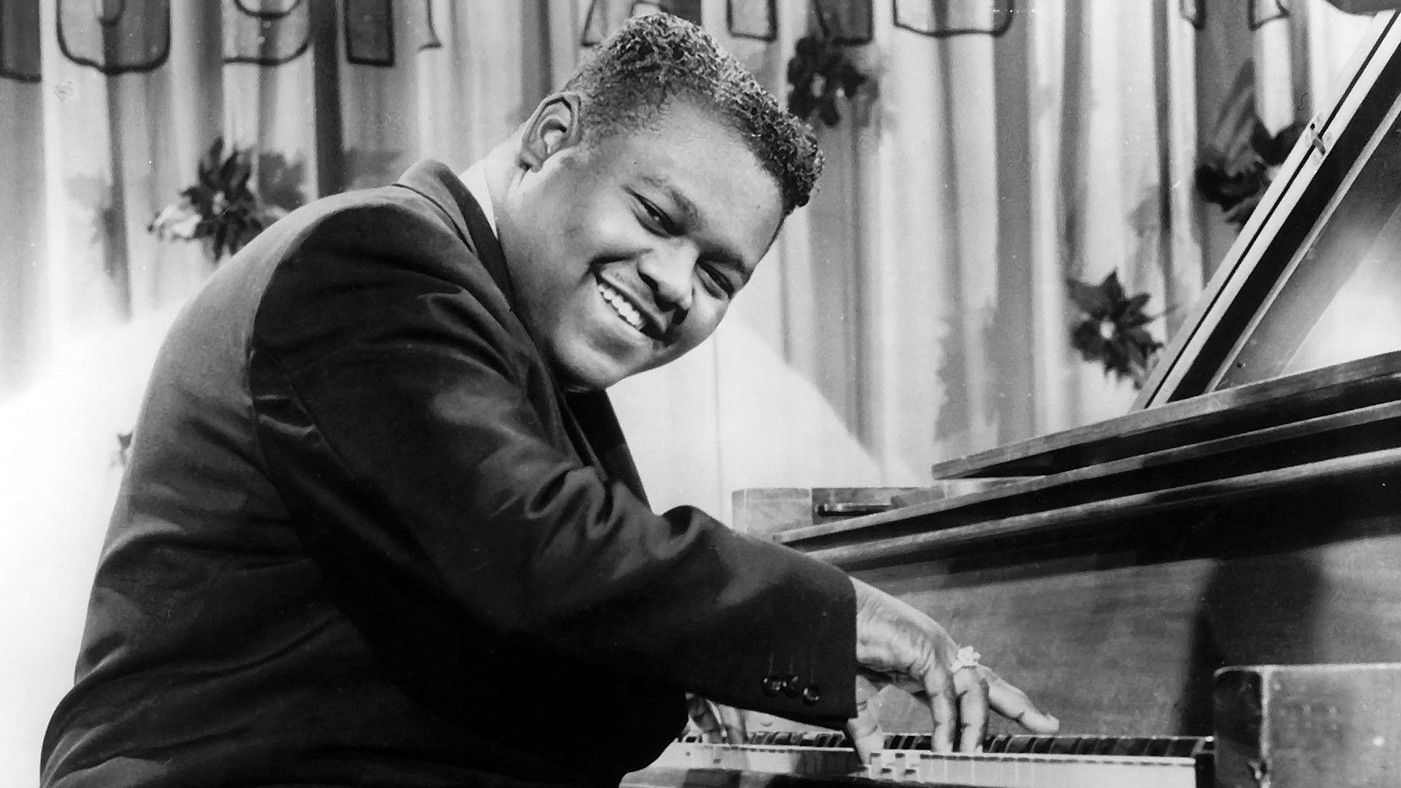 Fats Domino at the piano, playing his timeless hit "Blueberry Hill"
Fats Domino at the piano, playing his timeless hit "Blueberry Hill"
“Blueberry Hill,” although initially recorded in 1940 by artists like Gene Autry and Glenn Miller, became indelibly linked to Fats Domino. Domino’s rendition, inspired by Louis Armstrong’s 1949 version, emerged somewhat unexpectedly during a recording session when he was short on new material. Producer Dave Bartholomew initially doubted the song’s potential but was thankfully overruled. “Blueberry Hill” became Domino’s signature hit, significantly expanding his audience. Carl Perkins noted the song’s widespread appeal, stating, “In the white honky-tonks where I was playin’, they were punchin’ ‘Blueberry Hill.’ And white cats were dancin’ to Fats Domino.” Its crossover success solidified its place as one of the most essential Fats Domino songs.
“I’m in Love Again” (1956)
If “Ain’t That a Shame” announced Fats Domino’s arrival on the pop scene, “I’m in Love Again” solidified his chart dominance. This concise declaration of love, set to a vibrant saxophone melody and Domino’s signature bluesy piano, became his first major hit, spending 18 weeks on the charts and reaching Number Three. Its upbeat tempo and sincere lyrics (“Yes, it’s me and I’m in love again/Had no lovin’ since you know when”) resonated widely within rock and roll, inspiring covers by Bill Haley and his Comets, the Upsetters (featuring Little Richard), and Ricky Nelson, among others. “I’m in Love Again” remained a staple in Domino’s live performances well into the 21st century, proving its lasting appeal as one of his essential songs.
“Blue Monday” (1956)
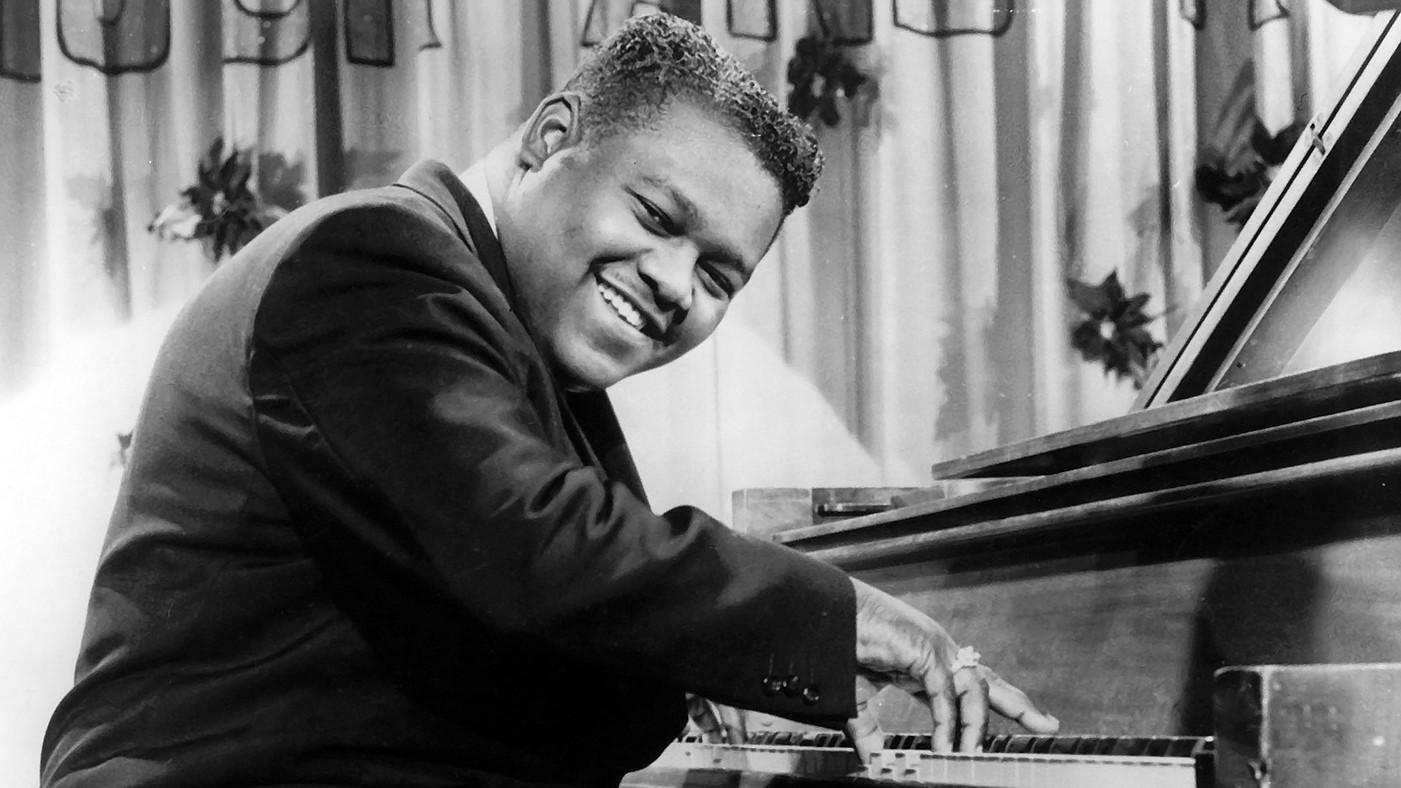 Fats Domino performing "Blue Monday" in a scene from the movie "The Girl Can't Help It"
Fats Domino performing "Blue Monday" in a scene from the movie "The Girl Can't Help It"
“Blue Monday” captures the working man’s blues, a song originally written for Smiley Lewis by Dave Bartholomew, Domino’s frequent collaborator. While Domino’s version remained faithful to the original, his charming delivery imbued the R&B track with a youthful and celebratory feel, particularly as he reaches the song’s conclusion, where the protagonist anticipates leaving the work week behind for a night of music. Domino transformed the song into a hit, paving the way for R&B records to penetrate mainstream pop charts. He even performed it in the iconic film The Girl Can’t Help It in the same year of its release. According to Domino’s biographer Rick Coleman, “Blue Monday” held a special place as the singer’s personal favorite among his vast catalog of songs.
“My Blue Heaven” (1956)
As the B-side to “I’m in Love Again,” “My Blue Heaven” offered a revved-up take on the pop standard, originally a Number One hit for Gene Austin in 1927. In contrast to the gentle, piano and clarinet-led original, Fats Domino amplified the tempo, added a strong backbeat, and sang with infectious optimism. Domino’s rendition, which charted for 13 weeks and reached Number 19 in 1956, significantly influenced subsequent interpretations of the song. Frank Sinatra’s versions of “My Blue Heaven” illustrate this influence; from a swinging jazz number in 1950 to a brisker, more rhythmic version by 1960, reflecting Domino’s impact on popular music. This transformation highlights the breadth of Fats Domino songs and his ability to revitalize classics.
“I’m Walkin’” (1957)
 Fats Domino singing "I'm Walkin'", a song that marked a peak in his commercial success
Fats Domino singing "I'm Walkin'", a song that marked a peak in his commercial success
Fats Domino reached the zenith of his commercial success with “I’m Walkin’,” recorded on January 3rd, 1957, featuring his core band members Earl Palmer, Frank Fields, and Herb Hardesty. At the time, “Blueberry Hill” and “Blue Monday” were still enjoying widespread airplay. Co-written with Dave Bartholomew, “I’m Walkin’” leaned slightly towards a country flavor compared to his recent hits. Bartholomew recounted his certainty of the song’s hit potential when children in the studio spontaneously began dancing upon hearing it. He remarked, “The only record I ever really felt that we had a big hit on was ‘I’m Walkin’.” The song’s blend of clarinet and Dixieland jazz elements contributed to its broad appeal. “I’m Walkin’” gained further momentum when Ricky Nelson performed it on The Adventures of Ozzie & Harriet, introducing Fats Domino’s music to a new generation and simultaneously launching Nelson’s own career as a teen idol.
“Whole Lotta Loving” (1958)
“Whole Lotta Loving,” penned by Domino himself, exudes pure, unadulterated joy. Beyond its title foreshadowing a future hard-rock anthem, this track is characterized by hand-clapping rhythms and playful kissing sounds in the chorus. Its effortless feel was mirrored in its creation; a New Orleans reporter witnessed Domino and his band, led by Dave Bartholomew, record “Whole Lotta Loving” in just six takes on a single November day. Domino’s simple explanation, “When things go right, I can make records all day,” encapsulates his natural musicality and the spontaneous energy of his essential songs.
“I Want to Walk You Home” (1959)
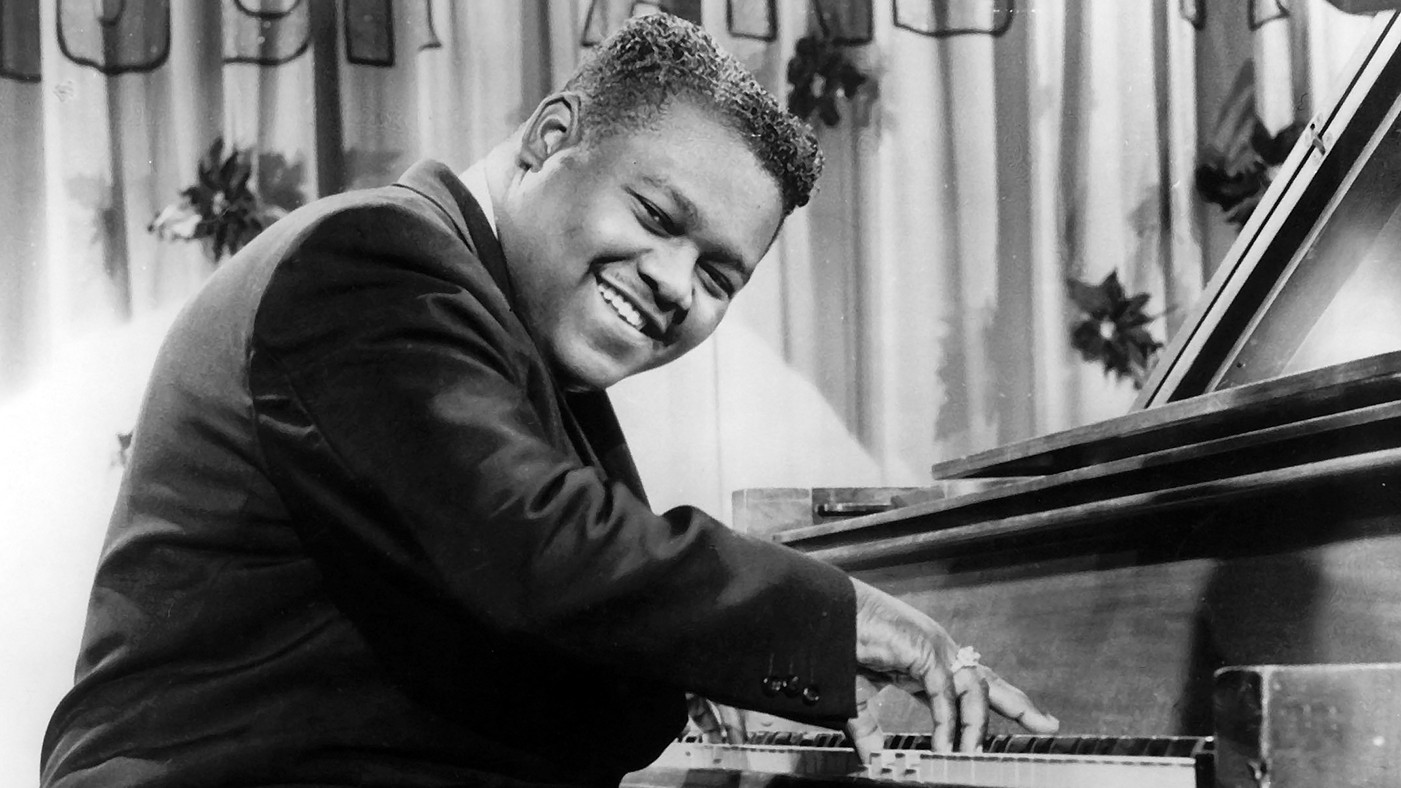 Fats Domino performing "I Want to Walk You Home", a tender and romantic ballad
Fats Domino performing "I Want to Walk You Home", a tender and romantic ballad
Fats Domino, like Buddy Holly, possessed the rare ability to temper his rhythmic fire with sweetness. “I Want to Walk You Home,” a gentle piano-driven stroll that reached Number Eight on the charts, is overflowing with innocence and devotion. The singer’s earnest desire to not just walk his love interest home but all the way to the altar is profoundly touching. At the one-minute mark, Domino’s simple yet universal plea, “I want to hold your hand,” resonates deeply. This song’s impact extended across the Atlantic, reportedly influencing the songwriting of Lennon and McCartney, highlighting Domino’s global influence on music and songwriting.
“Walking to New Orleans” (1960)
Louisiana songwriter Bobby Charles, a lifelong admirer of Fats Domino, crafted “Walking to New Orleans.” Legend has it that Charles, upon meeting Domino, expressed his inability to reach New Orleans due to lack of transportation. Domino’s supposed reply, “Well, you’d better start walking,” sparked the song’s creation, reportedly written in just 15 minutes. Dave Bartholomew enhanced the track with lush strings, contributing to its massive success. While covered numerous times, Neil Young’s emotional rendition at the 2005 React Now benefit for Hurricane Katrina victims stands out, underscoring the song’s emotional depth and enduring appeal. “Walking to New Orleans” is a testament to the storytelling and emotional range found within Fats Domino songs.
“Jambalaya” (1961)
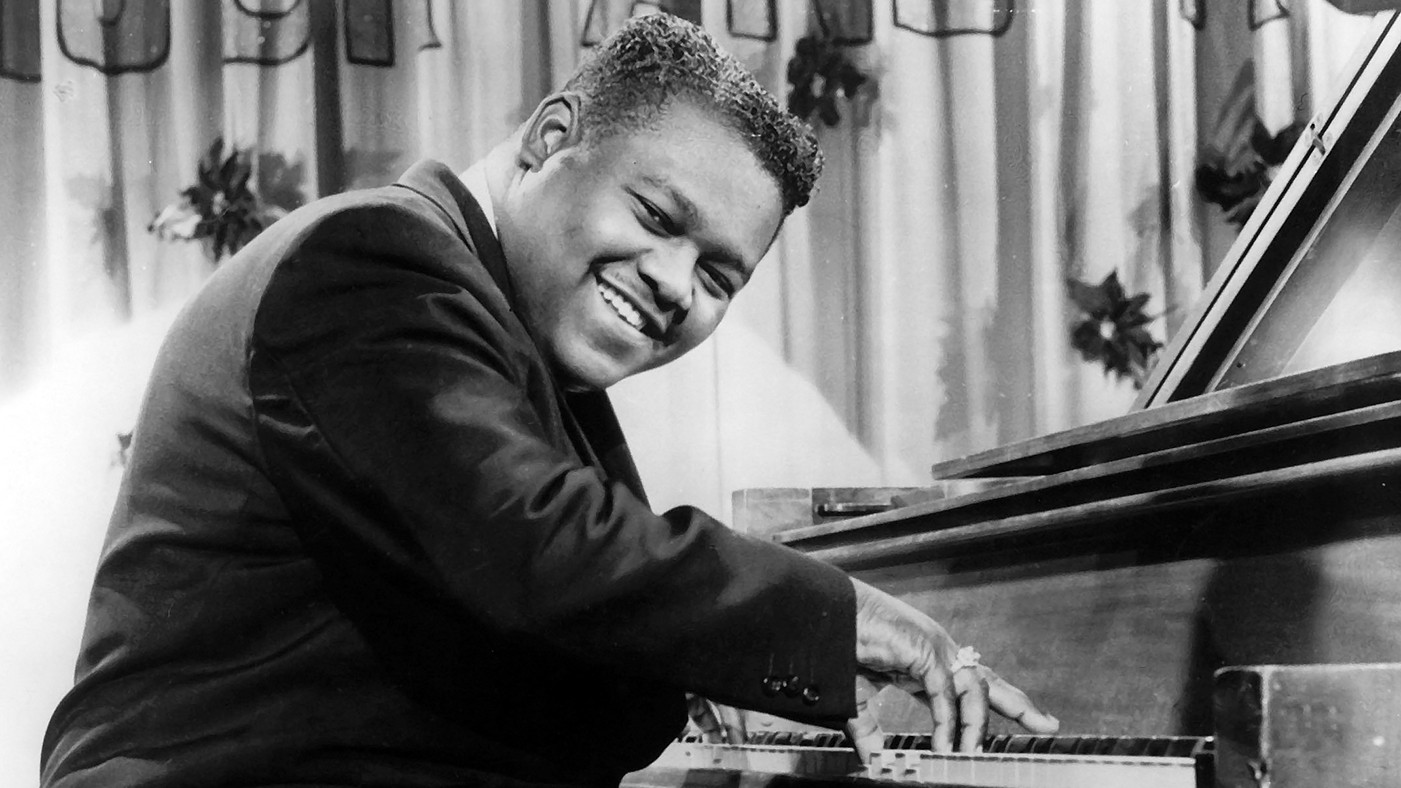 Fats Domino performing "Jambalaya", infusing New Orleans flavor into a country classic
Fats Domino performing "Jambalaya", infusing New Orleans flavor into a country classic
Hank Williams’ “Jambalaya” had already become a standard, reaching Number One in 1952. Jerry Lee Lewis brought his signature energy to it in 1956. However, it was not until Fats Domino took on the song in 1961 that a New Orleans sensibility was truly infused into it. Domino transformed it from a novelty tune into a heartfelt celebration of life, reflecting the spirit of “big fun on the bayou” that defined his career. Accompanied by a vibrant horn section, Domino’s relaxed, almost crooning vocal delivery creates a steady, rolling rhythm. Despite being a B-side to “I Hear You Knocking,” Domino’s “Jambalaya” reached Number 30 on the charts. Preceding Ray Charles’ Modern Sounds in Country and Western Music by a year, Fats Domino’s rendition demonstrated his pioneering approach to blending genres and his unique ability to make any song distinctly his own, further enriching the collection of essential Fats Domino songs.
Fats Domino’s contribution to music is immeasurable. His essential songs continue to inspire joy, romance, and the sheer thrill of rock and roll. Exploring his discography is not just a journey through musical history but an experience of pure, unadulterated musical delight.
